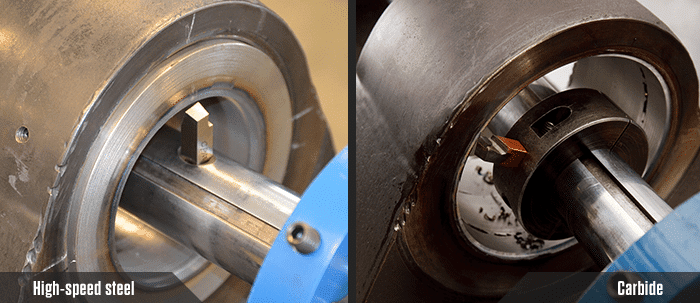
22 Sep Line Boring How To: Carbide or High-Speed Steel?
When planning a line boring machine job, customers must determine the best tool bit for the project. Understanding the when and why to choose high-speed steel over carbide is crucial to making the right decision.
Typically when line boring, the closer you can keep the bearings to where the metal is being cut, the better. As the distance from the bearings increases, you need to compensate for the lack of rigidity. Carbide and high-speed steel bits provide different cutting forces.
So, which should you use and when?
- Carbide is a hard material that cuts quite differently than a high-speed tool bit. It’s useful when you need to repair a bore that is longer, requires an uninterrupted cut and just needs a final finish. Carbide is a good option when boring harder material. This bit doesn’t break down with heat and friction and can remain in the same condition for a longer period of time.
- The main differentiators for a high-speed steel tool bit are its sharpness and strength to withstand cutting forces. Comparatively, line boring with a carbide bit is akin to whittling with a butter knife while a high-speed steel tool bit is like a sharp hunting knife.
Interested in learning more about CLIMAX line boring solutions? We want to hear from you! Contact us today.


